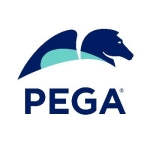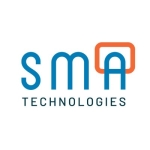What is our primary use case?
Our primary use case is creating automation for day-to-day activities for our internal use, especially for performance management and reporting. Apart from that, we create some automation applications for our clients as they're using UiPath. That's another use case.
How has it helped my organization?
We prepare database reports where a lot of product data is consumed. Creating reports or reporting used to take a lot of time and effort for us. UiPath has been very helpful for us in quickening this process and making it efficient.
It enables us to implement end-to-end automation. With our data and reporting tasks, there were a lot of repetitive tasks that needed to be done, which sometimes can be irritating. UiPath has completely taken over this process. So, right from the input of data to the extraction of reports, the complete end-to-end process is covered by UiPath. I don't have any complaints.
With UiPath, our automations are getting better and better. UiPath is driving performance, innovation, and growth across our entire organization. With report automation being our main use case, we saved a lot of hours, and we have also reduced a lot of overhead costs with UiPath. With automated data processing, errors are minimal. The error rate is almost zero, and the time taken is pretty quick. Our efficiency has improved, and that has been a major benefit for us.
We have been using the cloud version of UiPath. So, our on-premises footprint has definitely been reduced.
It has helped us move a lot closer to 100% digital transformation. Our reporting is automated, and we are almost 100% digital now. There is also an overall reduction in the cost and employee time.
It has reduced human error. The error rate is minimal or nearly zero. It's 100% smooth for us. In the past, we would have overlooked or missed certain data points, and during our final report collaboration, a mismatch would happen, but that is completely reduced with UiPath.
It has freed up a lot of employee time. It has also made our work much more efficient. Earlier, if seven employees were doing a particular task, only three employees are required now to do that task. So, other employees can focus on something else now.
It has saved about two working days or 16 hours a week. With the amount of data that we work with for reporting, it was a very hectic task for us. We had a lot of data sheets, Excel files, etc. UiPath has saved us two days of manual work per week.
It has saved costs. We were a team of seven who were handling reporting. We were taking reports and consolidating everything, whereas now, only three of us are required to do that. The remaining four can focus on something else. That much time and cost have been saved. This has resulted in us focusing on some other aspects of our business and bringing in more revenue for us. These are some of the overheads that have been completely saved by UiPath.
What is most valuable?
One feature that is particularly very likable is the My Workspace option under the Orchestrator menu. We can easily arrange and/or segregate all the folders there. The My Workspace option has been a very big positive for me. I've been able to streamline my work and do structured work with this My Workspace option. It's one of my favorite features. Apart from that, I like the integration services offered by UiPath. There is also the Studio option with good features, but I have used Studio very less. It's basically used to design specific automations and applications.
UiPath is very straightforward for creating automation. Especially in the UiPath Orchestrator and UiPath Studio, you can just drag and drop items to create an automation flow. It's that easy. For example, for the reporting automation, I designed the automation flow by using the in-built features. I did not type any command or code. I just picked a feature and dragged and dropped it to create and implement the flow. It was that easy for me.
The UiPath community is very vast, which is a very major plus for us. Whatever doubts we have and whatever knowledge transfer needs to happen can happen pretty quickly with the UiPath community. I find it very useful. Apart from the UiPath community, there is an Academy option where we can take up some courses, and we can do some certifications. That is also very good. I have personally not taken any courses, but I'm aware there are courses because my teammates did the certification courses. So, in terms of value, UiPath is an all-rounder for us because apart from doing automation, we get a whole lot of other things. It's very good.
What needs improvement?
They can improve the in-app guides and in-app tutorials. One instance where I faced a challenge with UiPath was during the initial week of using UiPath. It can be a little complex to understand at first. The in-app guides or the in-app tutorials could be much more elaborate and detailed. That would have made my entire journey smooth, but that did not happen.
The AI functionality could be improved. We used its AI functionality as a base for our reporting automation. It's not 100% perfect. It's still evolving. We used AI to predict the data modeling and report structure, but it wasn't accurate all the time. It's an evolving functionality, and I hope that it gets corrected over the course of time. The basic functionality is on par with any other software in the market, but it's not helpful for simplifying complex workflows and modules. The AI functionality has also not been helpful in increasing the number of automation, but UiPath, in general, has been very easy to use and helpful for doing more automation.
For how long have I used the solution?
I have been using UiPath for about eight or nine months.
What do I think about the stability of the solution?
I haven't faced any issues so far. It has been smooth. I would rate it a 10 out of 10 in terms of stability.
What do I think about the scalability of the solution?
I believe that any automation software, including UiPath, is scalable. It's a cloud-based solution, so it's definitely scalable for us. With UiPath, we have been able to do more automation and reduce our overall manual work. Our manual work now is very limited. It has definitely helped us scale up in terms of revenue, efficiency, and performance.
How are customer service and support?
They're definitely very knowledgeable. Until now, I haven't had any complaints about them. Whenever we have any doubts, we just email them our queries with certain documentation, if needed. They get back to us immediately. They are also patient. It's not like they're in a hurry. They're very patient. They make sure that our query is completely resolved before moving on. I would rate them a 9 out of 10.
How would you rate customer service and support?
Which solution did I use previously and why did I switch?
In my previous organization, they used a software called Freshworks. It was for automating our reports and sales processes, but I personally did not like that software because it was a little bit complex for me, and it was also costly. There were very few integrations that were offered in that particular software. We were not able to get the results that we needed. So, we looked into different solutions, and that's when I recommended UiPath to my team.
In terms of performance, UiPath has been very reliable. It's a complete cloud solution. The Freshworks software was not a cloud solution. We used it on-premises, but UiPath is a complete cloud solution for us. It's a very reliable and stable solution. We hardly face any downtime, server errors, or something like that with UiPath. That has been a very noticeable difference for me. Apart from that, in terms of complexity, UiPath is not at all complex. It's a structured solution. You choose A, and you can come to B, and you can come to C. It's very structured, which is something that was lacking in Freshworks.
How was the initial setup?
I was involved in its implementation. It was not a complex process. It just required me to sit with the UiPath team and get it implemented. We did not need an elaborate team or effort. Within 15 to 20 days approximately, we were able to set up everything and get it running completely. The implementation process was very smooth.
Its maintenance is also very easy because it's a cloud-based solution. We just need to keep it updated all the time. That's the only thing. We have employed just one person to take care of the maintenance.
What about the implementation team?
It was a combination of the in-house team and UiPath specialists. Their initial training team was very knowledgeable, and they were very pleasant in addressing all our queries with respect to how to design applications, how to create automation, and things like that.
What was our ROI?
We have definitely seen an ROI. Four employees are now not needed to do reporting. We have been able to transfer them to other projects. It has given some returns within four to five months. We have reduced our overall work time by around 30%. We have been able to use that saved time for other things helpful to bring in more sales, automation, etc.
Our inbound revenue is going up. We have seen a 20% increase in our overall revenue after the introduction of UiPath, but I cannot directly pinpoint that to UiPath because there are other factors as well.
What's my experience with pricing, setup cost, and licensing?
I was not involved in the pricing negotiations, but as far as I understand, my team was happy with the pricing. So, I assume that its price is moderate and competitive. It isn't highly-priced.
What other advice do I have?
To anyone looking into getting this solution, I would advise getting UiPath instantly and integrating it with your business to proceed further. If not UiPath, I would definitely recommend trying any other automation solution because that is the need of the hour. We are humans after all. Manual work is prone to error and less efficient. An automation solution can definitely help you scale your business quickly. UiPath is one of the top ones when it comes to automation. It's a tried, tested, and trusted solution. So, I would suggest going with UiPath, but if you have any concerns about it, you can definitely try other solutions.
Considering the UiPath community, UiPath Academy, and UiPath's all-around capabilities, I would rate it a 9 out of 10.
Which deployment model are you using for this solution?
Public Cloud
If public cloud, private cloud, or hybrid cloud, which cloud provider do you use?
Amazon Web Services (AWS)
Disclosure: PeerSpot contacted the reviewer to collect the review and to validate authenticity. The reviewer was referred by the vendor, but the review is not subject to editing or approval by the vendor.




















